For us, Sardinia is definitely one of the most beautiful travel destinations in all of Europe. We prepared well for our 16-day Sardinia tour this time, doing a lot of research, planning, and booking in advance. In the following article, we’d like to share our best tips for travel preparation for a Sardinia tour and explore topics such as rental cars, travel time, safety, costs, and accommodation. Have fun browsing and planning!
What else you should know
- Sardinia’s highlights in the north
- Sardinia’s highlights in the west
- Sardinia’s highlights in the south
- Sardinia’s highlights in the east
- Costs of our Sardinia tour
- Our beautiful accommodations
- The most beautiful beaches on the island
- 16-day Sardinia round trip
- What else you should know
- Sardinia entry & arrival
- Best time to travel to Sardinia
- Safety on the island
- Health & vaccinations
- Currency & credit card
- Book a rental car
- Driving on the island
- Book accommodation
- Costs & budget
- Tipping in Sardinia
- Power sockets & Electricity
- Internet on the island
- Language & Apps
- Sardinia Travel Guide
- Conclusion – Sardinia Travel Preparation
Sardinia Entry & Arrival
Are you planning a trip to Sardinia? Be sure to check your ID card (or passport) beforehand and make sure it is still valid. Travel documents may not have expired for more than one year (except for temporary ID cards), but we still recommend traveling with a valid ID card or passport.
Flights depart almost daily from many German airports. These flights then go to one of the island’s three airports: Alghero, Cagliari, or Olbia. We flew from Berlin to Olbia with EasyJet and began our counterclockwise tour there. Some vacationers also travel by ferry from Genoa, Civitavecchia, Piombino, or Livorno (destination: Olbia, Porto Torres, or Golfo Aranci).
Best time to travel to Sardinia
When planning your trip to Sardinia, you should also consider the “best time to travel.” Generally, you can travel to Sardinia at any time of year, but there are a few things to consider.
In our opinion, the best time to travel to Sardinia is the off-season (May, early June, late September, and October), as there are fewer tourists on the island and you can expect cheaper prices for accommodations, rental cars, and more.
From mid- to late May, we had temperatures between 28°C and 30°C every day, as well as cloudless skies. The water temperature was also very pleasant on many beaches and bays.

The season starts in June and lasts until the end of September. You should especially avoid the months of July and August, as this is also when Italian citizens are on holiday and vacationing on the island. Then the island gets crowded, significantly more expensive, and many hotspots are very crowded.
During the season, most parking spaces are subject to a fee, which is usually not the case off-season. In the summer months, the thermometer can easily reach 40 degrees Celsius.
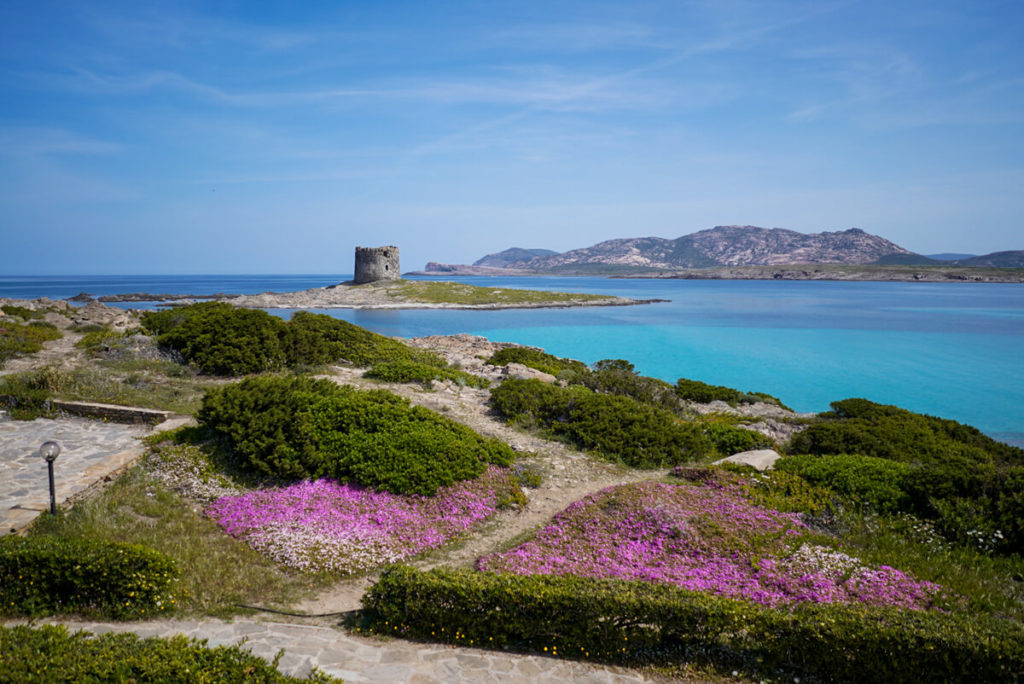
For the colder months from November to March, you should pack an umbrella and a windbreaker. The coldest months are January and February with only 14° to 15° C. April and October are ideal for outdoor activities (hiking, biking, etc.), as you can expect mild temperatures and gentle breezes. I (Bolle) was on the island 7 years ago in April and remember sunny and warm days. More about this here: Best time to travel to Sardinia.
Safety on the island
Sardinia is generally a very safe travel destination. Of course, there are also some black sheep on the island (pickpockets, etc.) who are after your valuables. Therefore, you should never leave visibly valuable items in your car or on the beach. Show potential burglars that there is nothing to be stolen from you.
Don’t take too much cash with you on your explorations during the day, keep your documents (passport, ID, driver’s license, etc.) safe, and avoid large crowds. Pickpockets could strike especially in the crowd and steal from you while they are distracting you.
Health & Vaccination
There are no regulations regarding vaccinations, but standard vaccinations such as tetanus, measles, diphtheria, or mumps are recommended. Before your trip, be sure to check your vaccination record and check your vaccination status. You can find information here: Vaccination Calendar.
With your European Health Insurance Card, you have the same right to free medical care in Sardinia as in Germany. However, you should make sure that you receive treatment from doctors or hospitals affiliated to ATS Sardegna (Azienda Tutela Salute). If you have to pay for anything, be sure to get a detailed receipt for the services. This is the only way to get reimbursed by your health insurance company.
During the high season, there is a so-called “Guardia Medica Turstica”, especially in holiday resorts. At these “first aid stations,” you’ll find a doctor available around the clock to help with minor emergencies.
Currency & Credit Card
In Sardinia, you pay as usual with the euro. Most restaurants, cafés, shops, hotels, etc. also accept VISA, MasterCard, or Maestro without any problems. We regularly got cash from ATMs using our travel credit card or simply paid locally with our credit card.
Of course, you can usually also pay easily with your regular debit card. If you don’t have a travel credit card yet, we recommend our following article: The Best Travel Credit Cards. Here we present some really great credit cards for traveling.
Book a Rental Car
Currently, rental car prices are very high throughout Europe. Seven years ago, we paid just under €70 or €80 for a week; currently, it’s €80 to €110 per day. Crazy, right? We booked the first rental car about a month before our trip for €899 (15 days). After booking, however, we continued to monitor rental prices and fortunately noticed that they had dropped slightly.
In total, we booked 4 times and canceled 3 times (free of charge). The second car cost €771, the third €680, and the fourth only €592. So, it makes sense at the moment to keep an eye on prices despite having booked and to cancel the booking if necessary. With many providers (e.g. www.billiger-mietwagen.de*), cancellation is free of charge up to one day before arrival.
The following services should be included in your booking:
- All kilometers free
- Comprehensive insurance and theft protection with no excess (through reimbursement)
- Glass and tire protection
- Underbody protection
- Liability insurance: Coverage of at least €1 million
- Appropriate deposit
- Free cancellation until shortly before departure
When preparing for your trip to Sardinia, make sure you book your rental car in good time! We have been booking our cars at www.billiger-mietwagen.de* for many years and can only recommend this site to you.
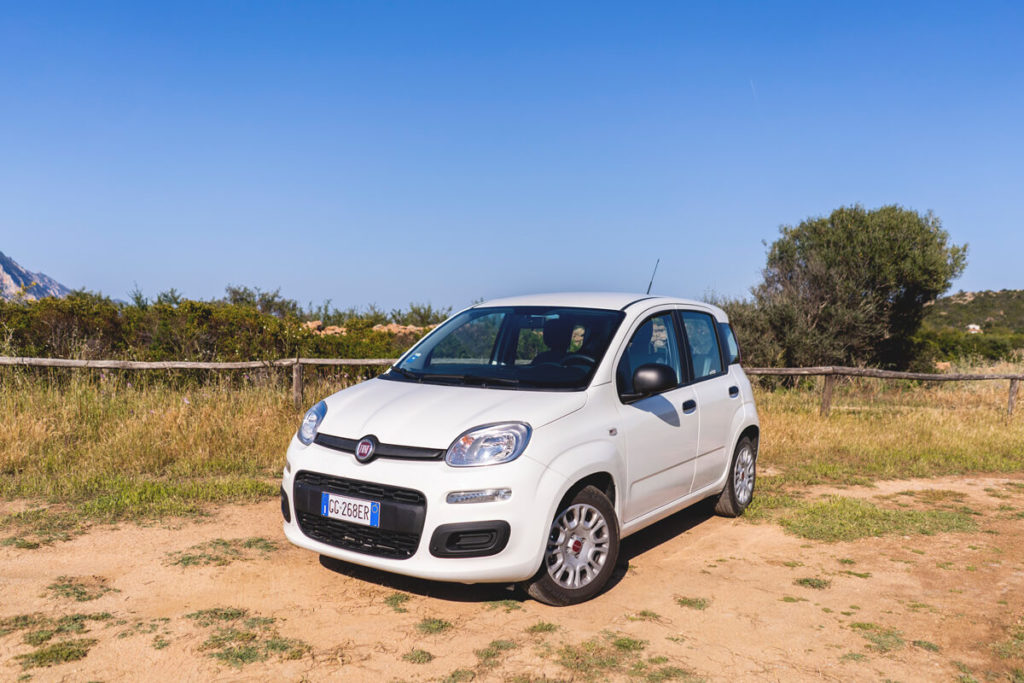
Driving on the island
Generally speaking, driving in Sardinia is not particularly difficult. Italian traffic regulations are largely identical to ours. In built-up areas, you are allowed to drive a maximum of 50 km/h, on country roads 90 km/h, on expressways 110 km/h, and on motorways 130 km/h (observe the signs). It’s important to remember that you must turn on your lights outside of built-up areas, even during the day.
Most gas stations are open from 7:30 a.m. to 12:30 p.m. and then again from 3:30 p.m. to 7:30 p.m. If there is no one there, you can often pay and fill up at the machine. On unpaved roads, you can expect some potholes now and then. Drive carefully and with foresight. We never had any problems driving in Sardinia.
Caution: Especially in the months of April, May, June, September and October, there are many motorcyclists on the island. But camper vans are also frequently seen on Sardinia’s roads. Drive carefully, follow the rules, and don’t let others unsettle you.
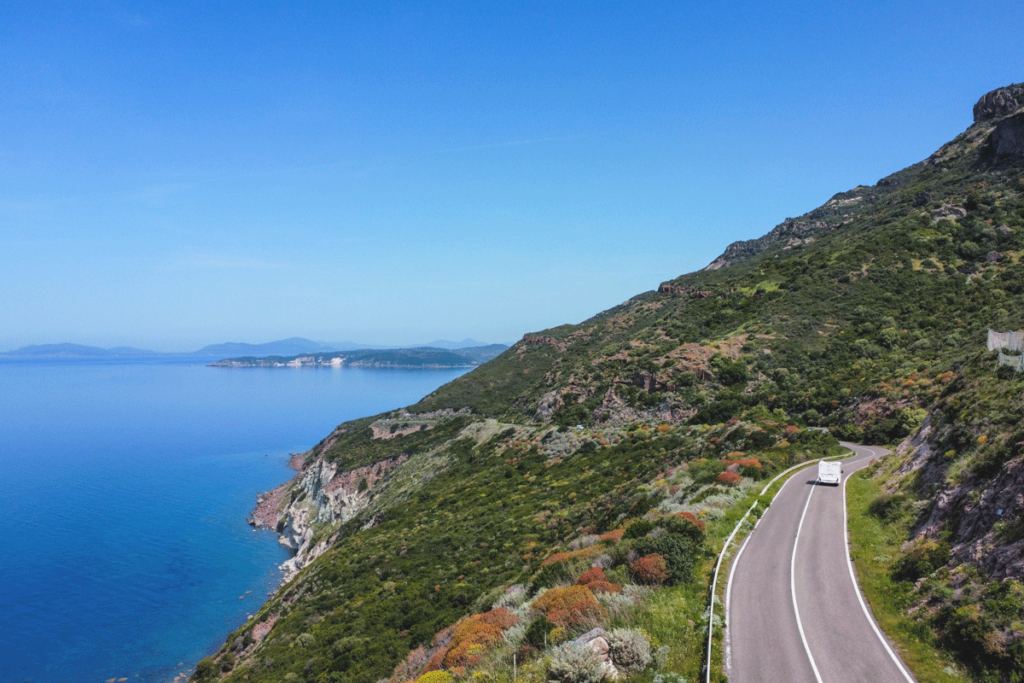
Booking Accommodation
We have to honestly admit that the search for really nice accommodations was very time-consuming and exhausting. Many accommodations were either too old-fashioned, too expensive, or already fully booked. However, you can generally find countless guesthouses, pensions, private rooms, vacation apartments, B&Bs, and hotels on the island.
If you’re traveling to Sardinia during the summer months of June, July, and August, be sure to book in advance, as nice accommodations book up very quickly. We also booked all accommodations 2 to 4 weeks in advance. We paid an average of €60 to €70 per night (mostly with breakfast). We stayed in some very nice accommodations, which we’ll introduce you to in more detail in the following article: The beautiful accommodations on our Sardinia tour.
Off-season, you can also find real bargains and even stay for €30 per night. Of course, this always depends on the time of year, the region, and your needs. We booked all accommodations through www.booking.com* and, as always, were very satisfied.
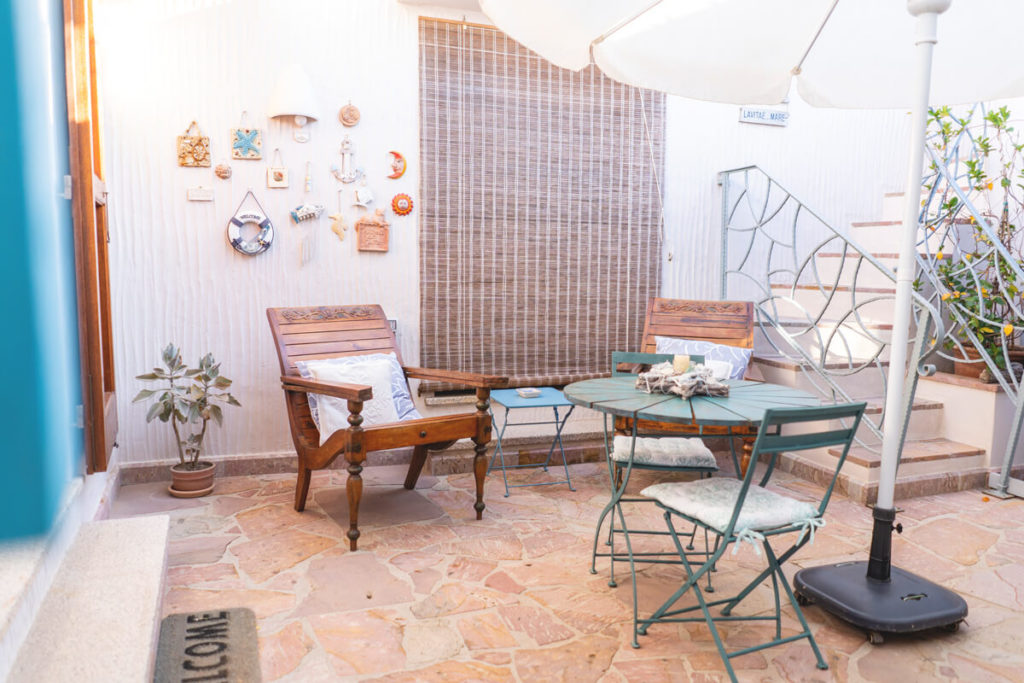
Costs & Budget
Currently, rental cars on the island are quite expensive at €80 to €110 per day in the summer. You also usually have to pay €1 to €2 per hour for parking during the season (June 1 to September 30). A liter of gasoline costs between €1.80 and €2.05 (as of June 2022).
The cost of a restaurant visit varies; sometimes we paid €15 for everything, but occasionally €30. This depends on the restaurant, of course. However, you can get a Magharita pizza for €5, a Coke for €1.50 to €2, and a cappuccino for €1.50 almost everywhere.
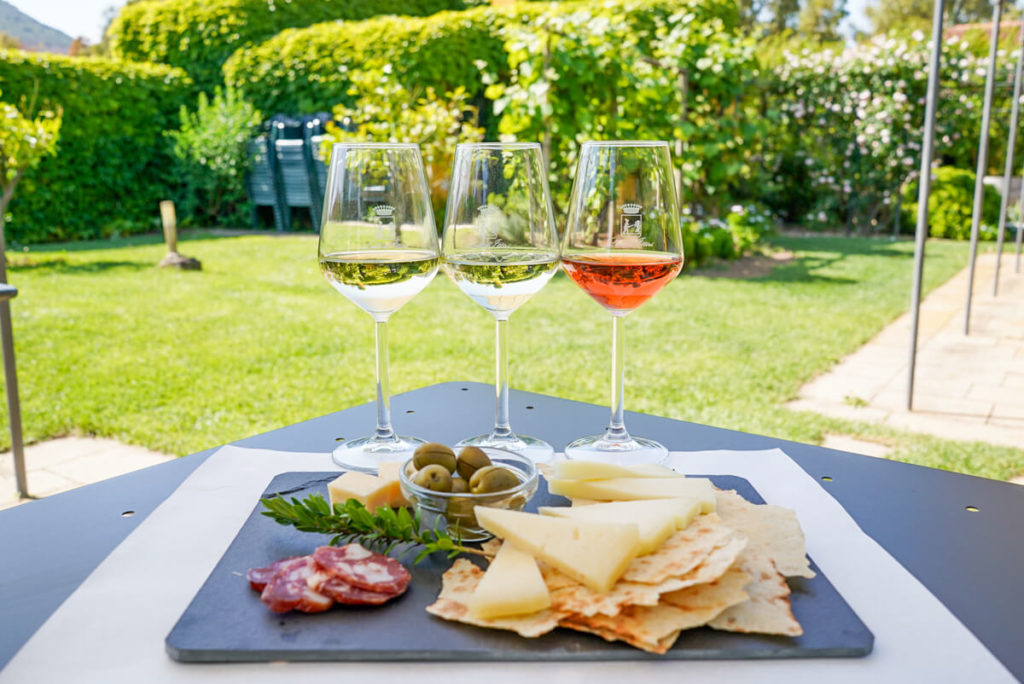
The cost of food in the supermarket is similar to the prices in Germany. Sometimes we even shopped at LIDL and cooked something ourselves. In addition to LIDL, you can also find the supermarket chains Coop, Crai, and Spar.
If you’d like to know how much our wonderful tour cost in total, check out this article: Costs of Sardinia – This is how much our 15-day tour cost.
Tipping in Sardinia
In Sardinia, it’s not particularly customary to tip, as the service charge (servizio compreso orcoperta) is already included in the price. Prices usually vary between €1 and €3 per person. In most cases, the price for this charge is already listed in small print at the bottom of the menu. This service charge includes setting the table and the food served.
Sockets & Power
We were able to use our plugs for chargers and laptops in every accommodation in Sardinia. In most cases, you therefore don’t need a power adapter. However, you may find a socket with three holes (Type L) in your accommodation. Some plugs cannot be used there (e.g., Type F).
The accommodation itself usually provides such adapters, but in an emergency, you can also get one at the supermarket or general store (Alimentari). We had no problems with this and found Type C and F sockets in all accommodations. We rarely had Type L sockets, but we were able to use them with our plugs without any problems.
Internet on the island
In all accommodations, we had very good Wi-Fi, which we could use free of charge. While traveling, we always used our own data allowance on our smartphones and never had any problems. Reception was always very good, even on more remote coastal areas. You can usually find free Wi-Fi in many restaurants, cafés, and airports. However, please do not share sensitive data on unsecured Wi-Fi. Use a VPN* instead.
Language & Apps
Many of the owners of our accommodations didn’t speak English, so we often had to communicate with gestures. Some simply used Google Translate on their phones and then showed us their translations. This worked perfectly and was sometimes quite funny.
It’s not a bad idea to take a quick crash course before your trip and learn the most common phrases and words. Check out the Babbel app (paid) or the Duolingo app (free). We also met many locals on the island with whom we were able to speak English extensively.
Sardinia Travel Guide
Are you still looking for a suitable travel guide for your trip to Sardinia? We can recommend the travel guide from DuMont Verlag* and the travel guide from Marco Polo*. We used both guides on the island and frequently consulted them, especially on longer car journeys. If you prefer more detailed information, you should get the travel guide from Michael Müller Verlag*. When planning our trip, we also like to use Google Maps and mark interesting places in advance that we might want to see while we’re there.
Conclusion – Sardinia Travel Preparation
We sincerely hope that our tips for preparing for your trip to Sardinia have been helpful. It’s important that you book your rental car and accommodations in advance, depending on your travel season. You should also be aware that the island can get very crowded during the summer season, which is why we recommend the months of April, May, September, and October. Either way, Sardinia is a magnificent island that has so much to offer. It certainly won’t be our last visit!